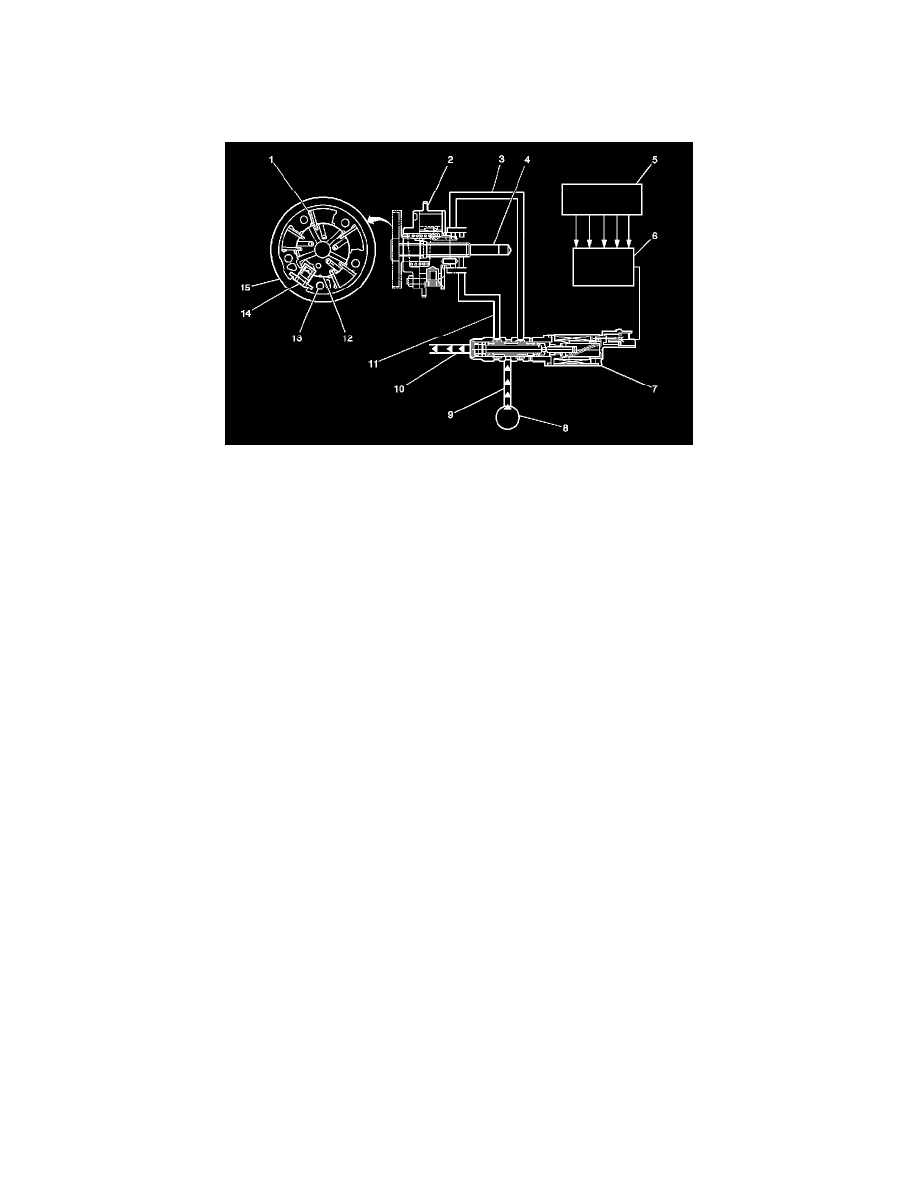Enclave AWD V6-3.6L (2009)

Variable Valve Timing Actuator: Description and Operation
Camshaft Actuator System Description
Camshaft Actuator System Overview
1 - Camshaft Actuator Vane
2 - Timing Chain Sprocket
3 - Engine Oil Pressure-For retarding the camshaft
4 - Camshaft
5 - Input Signals from Engine Sensors
6 - Engine Control Module (ECM)
7 - Camshaft Actuator Solenoid
8 - Engine Oil Pump
9 - Engine Oil Pressure Supply
10 - Engine Oil Drain
11 - Engine Oil Pressure-For advancing the camshaft
12 - Camshaft Actuator Rotor
13 - Camshaft Position Sensor Reluctor
14 - Camshaft Actuator Lock Pin
15 - Camshaft Actuator Housing
The camshaft actuator system enables the engine control module (ECM) to change camshaft timing of all 4 camshafts while the engine is operating. The
CMP actuator assembly (15) varies the camshaft position in response to directional changes in oil pressure. The CMP actuator solenoid valve controls
the oil pressure that is applied to advance or retard a camshaft. Modifying camshaft timing under changing engine demand provides better balance
between the following performance concerns:
*
Engine power output
*
Fuel economy
*
Lower tailpipe emissions
The CMP actuator solenoid valve (7) is controlled by the ECM. The crankshaft position (CKP) sensor and the CMP sensors are used to monitor changes
in camshaft positions. The ECM uses the following information in order to calculate the desired camshaft positions:
*
The engine coolant temperature (ECT) sensor
*
The calculated engine oil temperature (EOT)
*
The mass air flow (MAF) sensor
*
The throttle position (TP) sensor
*
The vehicle speed sensor (VSS)
*
The volumetric efficiency
Operation
The CMP actuator assembly has an outer housing that is driven by an engine timing chain. Inside the assembly is a rotor with fixed vanes that is attached
to the camshaft. Oil pressure that is applied to the fixed vanes will rotate a specific camshaft in relationship to the crankshaft. The movement of the
intake camshafts will advance the intake valve timing up to a maximum of 50 crankshaft degrees. The movement of the exhaust camshafts will retard the
